- +91 9881201966 / 020 2614 1134
- +919921944154
- info@devsoralcare.com
- Mon - Sat 10AM-7PM
Brushing alone isn’t always enough to maintain oral health. Dental floss is a powerful tool in any oral care routine, helping to remove plaque and food particles from between teeth where toothbrushes can’t reach.
However, not all floss is created equal. There are many types of dental floss, each tailored to specific needs, preferences, and dental situations.
From traditional string floss to dental tape, super floss, and floss picks, each type offers unique features that cater to different users.
Want a better flossing experience? Choosing the right type of floss can make a big difference!
Using the appropriate floss type can enhance convenience, provide greater comfort, and improve the effectiveness of your flossing routine.
For example, those with tight spaces between their teeth might find waxed floss easier to slide in and out, while someone with wider gaps might prefer dental tape. Similarly, individuals with braces or dental bridges might benefit from super floss, specifically designed to reach those tricky areas.
The right dental floss makes the process more comfortable and efficient and ensures a more thorough clean, contributing to healthier gums and a brighter smile.
By understanding the various types of floss available and choosing the one that best fits your unique needs, you can create a more enjoyable and effective flossing routine, making it easier to stick with this vital habit in the long run.
Understanding the different types of dental floss can help you choose the one that best suits your oral care needs. Here’s a breakdown of the main types and how each can benefit various users:
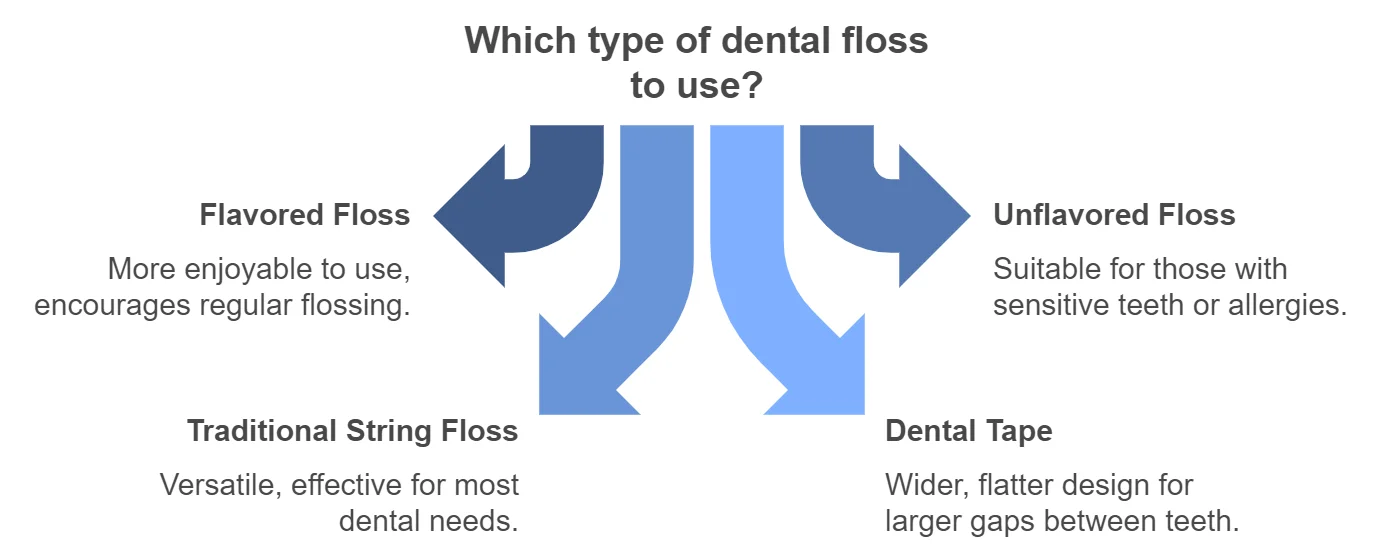

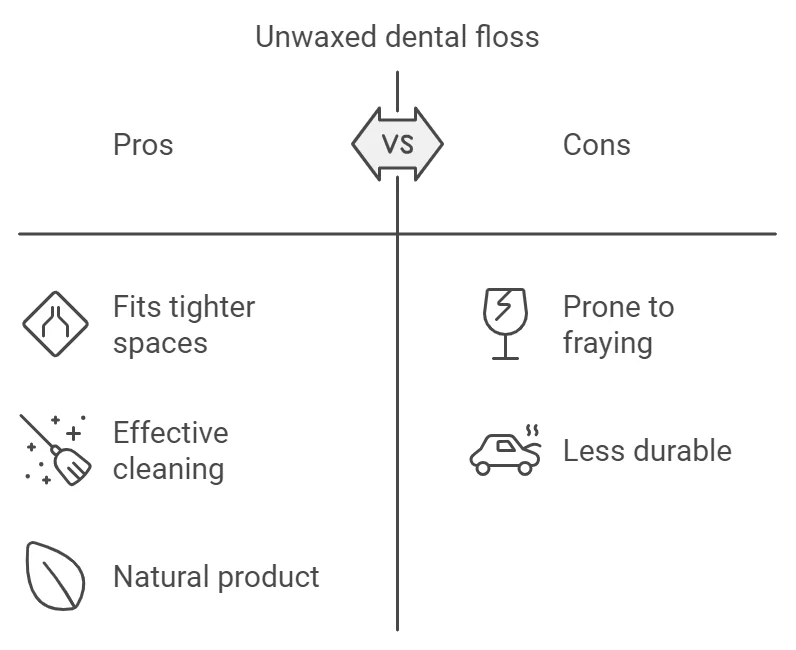
Unflavored floss is ideal for those who prefer a more neutral experience. It’s straightforward and typically free from additional chemicals, making it a good option for individuals with allergies or sensitivities to certain ingredients.
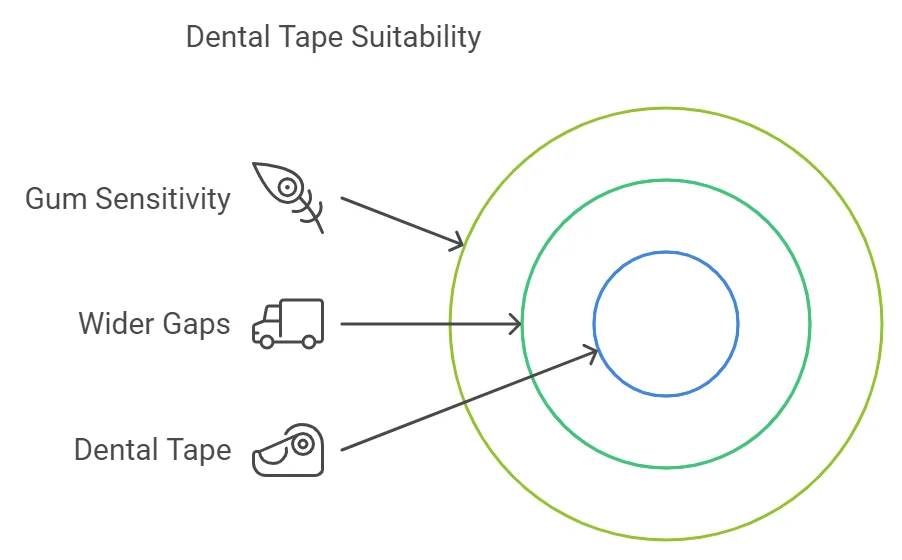
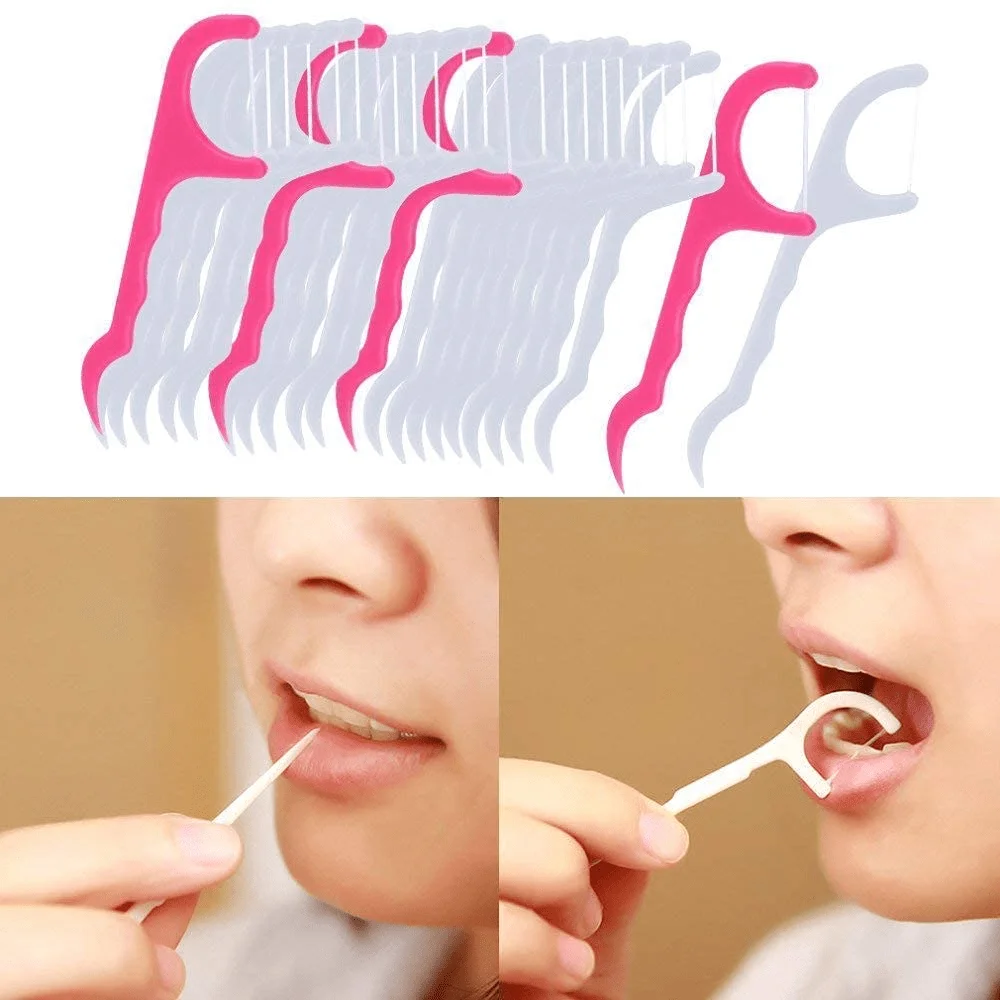
Each type of dental floss offers unique benefits tailored to specific needs. Whether you prefer waxed for tight spaces, super floss for dental appliances, or a floss pick for convenience, finding the right type of floss can enhance your oral care routine, making flossing more effective and enjoyable. Here’s how you should choose a particular type of dental floss
Selecting the right type of dental floss can significantly improve the comfort and effectiveness of your flossing routine. Here’s how to match floss types with specific dental situations and considerations for sensitive gums.
Another option is thin, unwaxed floss, which can fit into tight spaces more quickly, though it may be slightly rougher.
Super floss makes it easier to clean around dental work, which is essential for preventing plaque buildup in these hard-to-reach areas.
These tools are small and portable, allowing you to floss anywhere without the hassle of wrapping traditional floss around your fingers.
Floss picks are also great for beginners or those with limited dexterity.
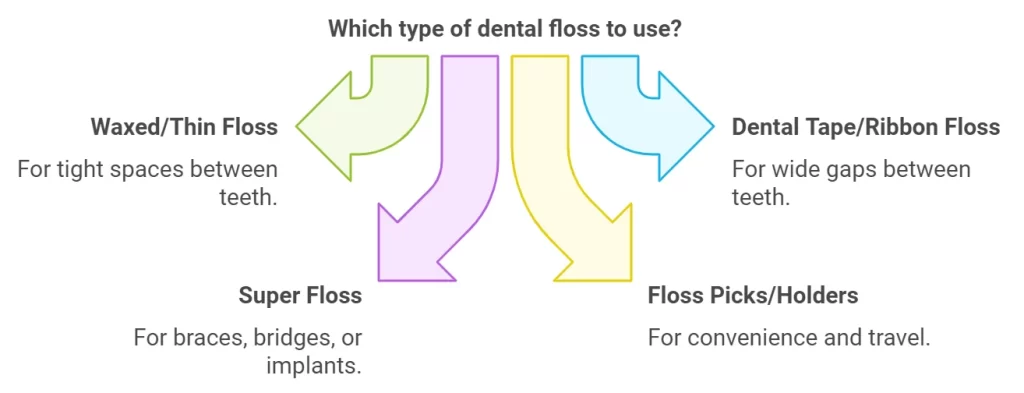
By understanding the unique benefits of each type of floss, you can find the one that best suits your dental needs and makes flossing a more enjoyable and effective part of your daily routine.
Using the right type of floss can make all the difference in maintaining a comfortable and effective oral care routine, especially for those with specific dental needs or sensitivities. By matching your floss to your unique dental situation, you’ll be able to maximize the benefits of flossing and maintain healthier teeth and gums.
Flossing is essential to oral hygiene, but it can sometimes feel challenging, especially for beginners. Here are some practical tips to help you get the most out of your flossing routine, whether you’re using traditional string floss, dental tape, super floss, or floss picks.
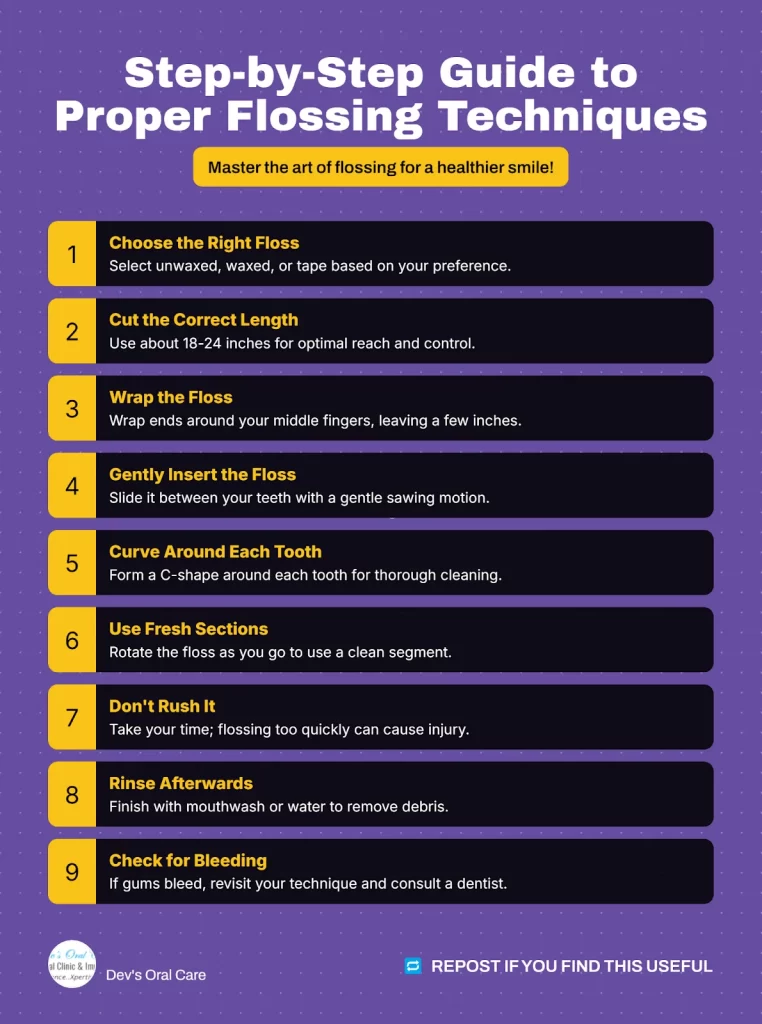
Where to Find These Types of Floss in India
You can easily find different types of floss online or a chemist near you.
These prices may vary based on your location and other factors.
Using the right type of dental floss can greatly improve your oral hygiene experience. From traditional waxed floss for tight spaces to super floss for specialized dental needs, choosing the floss that fits your situation can make a big difference in comfort and effectiveness.
If you’re new to flossing or have specific dental requirements, don’t hesitate to try different types. Experimenting with various options can help you find the perfect fit for your routine, making flossing a more pleasant and rewarding habit. Investing in quality floss supports a cleaner, healthier smile and offers long-term benefits by reducing plaque buildup and preventing gum disease. Happy flossing!


